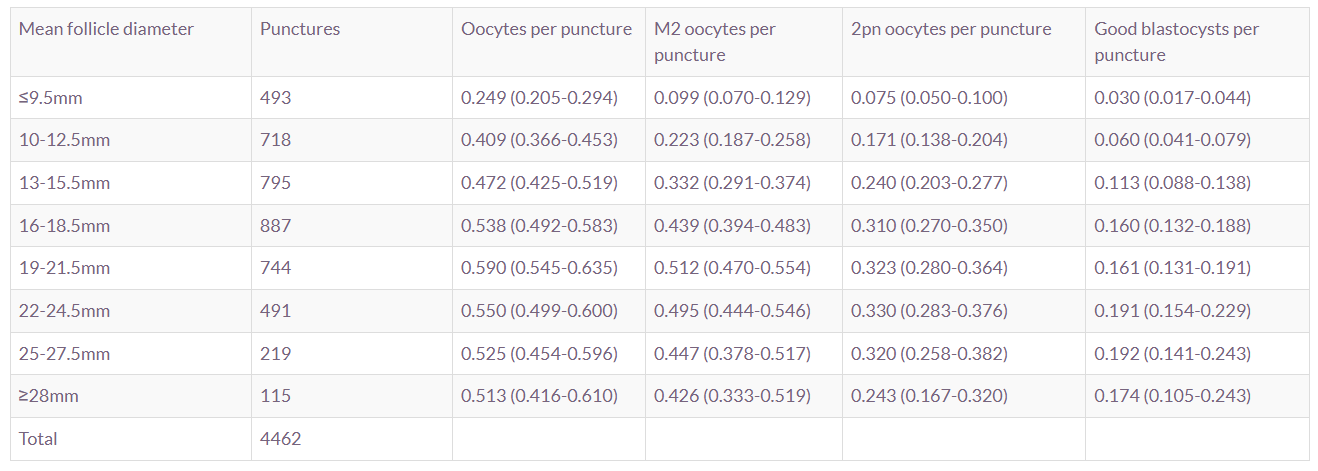The Effect of Ovarian Follicle Size on the Formation of Good Quality Blastocysts
Presented at: ASRM 2018 - Denver, Colorado
Authors: Bruce Shapiro, Ankita Raman, Forest Garner, Martha Aguirre, Chelsea Morrison, Shyni Thomas, Anika Bill, Carrie Bedient
Objective: Assess relationships, if any, between good-quality blastocyst formation and the diameter of the follicle from which the oocyte originated.
Design: IRB-approved prospective observational cohort study.
Materials and Methods: Patients underwent controlled ovarian stimulation with exogenous gonadotropins. During oocyte collection, follicle diameters were sonographically measured on two perpendicular axes, and the mean diameter was calculated for each follicle.Embryos were group-cultured to the blastocyst stage according to ranges of mean follicle diameter (≤9.5, 10-12.5, 13-15.5, 16-18.5, 19-21.5, 22-24.5, 25-27.5, and ≥28mm). Good blastocyst formation rates (A or B grade inner cell mass and trophectoderm, no C grades) were calculated for each follicle diameter group of each oocyte retrieval. Wilcoxon’s test was used to compare good blastocyst formation rates among follicle diameter groups.
Results: There were 4462 follicle punctures, 2152 collected oocytes,1633 M2 oocytes, 11262pn oocytes following ICSI, and 566 good-quality blastocysts. Weighted averages of oocytes collected, M2 oocytes, 2pn oocytes, and good-quality blastocysts per punctured follicle are shown in Table 1, along with 95% confidence intervals. Wilcoxon’s test revealed differences in the rates of good blastocyst formation per follicle among all groups (P<0.0001) and that follicles ≤12.5mm in diameter were least likely to yield good blastocysts, those 16mm or greater were the most likely to yield good blastocysts, and intermediate-sized follicles 13-15.5mm had intermediate probability of yielding good blastocysts.
Conclusions: Mean follicle diameter predicted formation of good-quality blastocysts, with a plateau starting at 16mm and with no significant evidence of diminution in good-quality blastocyst formation rate even beyond 28mm mean diameter.
Support: None

